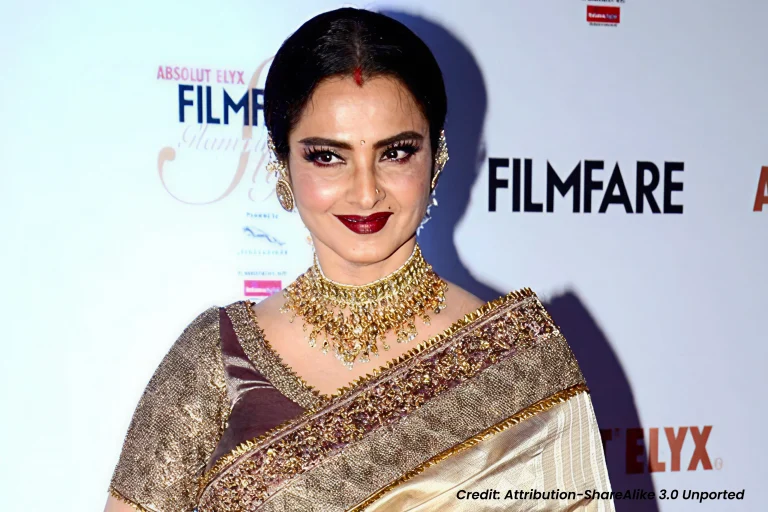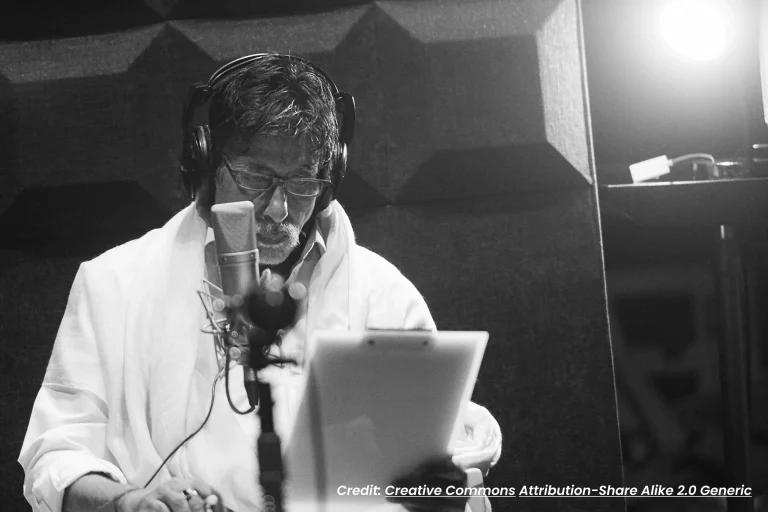All Topics
- Alchemizing Music Concepts for Students
- Artist Spotlight
- artium gift card
- Artium Maestros
- Artium News
- buying guide
- Carnatic Music
- Devotional Music
- Editorials by Ananth Vaidyanathan
- Film Music
- Guitar
- Hindustani Classical Music
- Indian Classical Music
- Indian Folk Music
- Insights
- Instruments
- Karaoke Singing
- Keyboard
- Kids Music
- maestros
- Music Education
- Music for Kids
- Music Industry
- Music Instruments
- Music Legends
- Music Theory
- Music Therapy
- Piano
- piano guide
- Success Stories
- Tamil Film Music
- Telugu Film Music
- Time Theory
- Tools
- Uncategorized
- Vocal Singing
- Vocals
- western classical music
- western music
- Western vocal music
Alchemizing Music Concepts for Students
Understanding the Features and Benefits of Varisai-s in Carnatic Music
Understanding the Features and Benefits of Varisai-s in Carnatic Music

Table of Contents
Training systems in any skill-based subject, including language and mathematics, are built on the principle of deconstructing the skill into constituent elements that become building blocks. This enables beginners to train from the alphabet or elements, to the final language of the art or subject.
The Carnatic Music training system, believed to have been created by Purandaradasa, is a highly scientific methodology that effortlessly and rapidly builds students’ melodic, rhythmic, vocal, and aesthetic skills. Within a few months, students can perform simple songs with effectiveness, precision, grammatical correctness, and the aesthetic culture of the Carnatic idiom.
This article decodes the design of the Basic Varisai-s — Sarali Varisai, Ecchusthayi Varisai, Thaggusthayi Varisai, Janta Varisai, Dhaatu Varisai, and Alankaram, which are the fundamental Swara exercises of Carnatic Music. It explains how each feature of this marathon inculcates specific skills in the learner. If students become aware of these benefits and practice with awareness, these exercises can serve as lifelong tools to bring continuous progress in virtuosity and command over the fundamental building blocks and elements of Carnatic Music.
I feel it is critical for teachers of beginners to understand the logic of the exercises created by our forefathers, and ensure that students also understand them, and are able to abide by correct enunciation and practice methods.
There are minor variations in exercises in different books and sources. I have created PDF files accessible at the beginning of each Varisai section, according to how I learned these exercises as a child.
The Fundamental Significance and Benefits of Exercises in Swara Mnemonics – Sa Re Ga Ma …
In Indian Classical Music, unlike in any other system in the world, the mnemonics (Sa Re Ga Ma Pa Dha Ni) of the seven notes – Shadja, Rishabh, Gandhar, Madhyam, Pancham, Dhaivath, and Nishad are not just mnemonics but serve as an integral part of performance aesthetics and tools. They are employed in compositions and brilliant improvisation in Hindustani and Carnatic music, also in film compositions occasionally, and definitely in the new genre of Indian fusion music, which employs a number of melodic and rhythmic improvisational techniques and skills of Indian Classical Music.
Command over the Swara mnemonics is a fundamental skill that enables an Indian classical music learner and musician to understand, decode, and create music—literally, the ability to think in notes. The Varisai exercises give the learner this intimacy with note identities, in addition to an array of other musical and vocal benefits.
In terms of human cognitive psychology, intimacy with any identity comes with the deep association of a form with a name. While notes are universal to all music, the practice of Sa Re Ga Ma Pa Dha Ni gives the Indian Classical Musician an uncanny ability to relate to notes in a manner that can be appreciated only when one acquires and experiences that ability.
Sarali Varisai
Sarali Varasai-s are a set of ascent-descent patterns with simple variations set to Adi Thalam of 8 units, which is delineated by the following actions of the hand :
1 Beat, 2 Little finger, 3 Ring Finger,
4 Beat, 5 Wave, 6 Beat, 7 Wave
The First Exercise
The very first exercise, which is often taken for granted, is a simple ascent-descent within the mid-octave, to be learned and diligently practiced in Adi Thalam of 8 units, at three speeds – basic, double of basic, and quadruple of basic. This hierarchy of tempi is referred to as ‘Kalam’ in Carnatic music. Kalam, originally a Sanskrit term Kala, literally means ‘time’.
Benefits that the Learner Gets
- A sense of ascent and descent of pitch – which is the fundamental graph of music.
- A sense of the octave, firstly as a span, and secondly, that the same Sa repeats itself in a different form at a higher pitch.
- A deep conditioning into the mid octave as a reference point for higher and lower octaves (that will be introduced in the next exercise, Echusthayi Varisai.) The mid octave is, in a sense, the central playing field in musical composition, improvisation, and cognitive experience.
- A sense and conditioning of Saptaswara – that the 7 notes in an octave are a fundamental frame of reference.
- A sense that Sa is in some way a fundamental note – a place of starting and ending, a place of resolution and returning to base. This is called tonic sense.
- A sense of what Tala is, and how music and Tala cycle go together. The student has to learn to mark the tala with his or her right hand on the right thigh when seated cross legged.
- This enables the student to understand that Tala-s have a count, and are timekeepers which facilitate singing in different tempi
- The choice of Adi Thalam for all the Varisai-s except Alankaram, is significant. Adi means first, original or basic. This Thalam, with its 8 units and the inner pulse of 4, becomes the fundamental reference point for the faculties, to enable expansion into other tala-s and pulses.
- Correct pitching
- An experience and sense of semitones, tones, and one-and-a-half tones through the Mayamalavagaula scale, which is a complex sequence of – one tone, 4 semitones, two one-and-a-half tones. In spite of its complexity, this scale is alluring because Pa Dha Ni Sa is a perfect transposition of Sa Ri Ga Ma which is very critical in musical cognition (this has been touched upon in the article on Swara. We will understand this in detail in a later article). Mayamalavaguala is traditionally the raga for the initial exercises that we have inherited through the guru shishya parampara. Some musicians do question the choice of Mayamalavagaula and suggest scales that are sequences of 5 tones and 2 semitones.
- Ignition of natural vocal inflexions (gamaka-s), when the student practices in mid and high speed tempi. Some teachers start with Raga gamaka-s, some start with straight notes. I personally would recommend starting with straight notes for two reasons –
- The student needs prior conditioning into the aesthetics of Carnatic Raga and Gamaka, through exposure (listening), to be able to achieve Raga gamaka-s.
- Practice of straight notes are ABSOLUTELY ESSENTIAL to acquire a sense of perfect pitching.
As we can see, little do we realize how tremendous and vital are the benefits that accrue to the learner’s faculties from just this first exercise.
Subsequent Exercises in Sarali Varisai
In all subsequent exercises in Sarali Varisai, this ascent-descent pattern is prefixed by another 8 notes, which are in the form of patterns created by sequencing the notes in different ways in each exercise. In the initial few exercises, the prefix is created through a four-note pattern that is repeated twice. Subsequently, 8-note patterns are introduced.
All exercises to be practiced in 3 speeds.
Benefits that the Learner Gets
- A sense of variations in the simple ascent-descent pattern (the alphabet or palette of music, so to speak) and how the language of music is created.
- A sense that different numbers of notes can be sequenced into patterns.
- Accordingly, a sense of rhythmic patterns – chhanda-s, through stresses on specific swara-s in each pattern. (Ref Article on Understanding Chhanda, Theka, Tala and Drums).
- Basic syncopation sense. The opening pattern in the 9th exercise – SRGS RGSR – can be sung according to this stress pattern – SRG SRG SR – stressing on the Sa-s. If the student is able to follow this stress pattern, i.e. 3 3 2, while the Tala is being executed by the hand in a 4 4 pattern, the ability to handle contrasting stresses in two parts of the body (vocal system and hand), will trigger the syncopation sense.
- Progressively incremental command over pitching and rhythmic skills.
- Skills in musical articulation of phonemes – clarity, definition, and perfection of vowel sounds and clarity, perfection, and musicality of consonant sounds.
- A sense of song. The most ingenious aspect of the Carnatic Varisai-s is that they land on the learner’s aesthetic sense as simple songs, especially the last five exercises.
It is vital that the first exercise – the simple ascent and descent, be practiced life-long as a veritable ‘sutra’ to give the faculties a solid base of reference on which to build the superstructure of musical and vocal skills. I have heard the greatest of vocalists practice these runs at high speed in akaar, in the green room, before a concert.
Echusthayi Varisai
This exercise, set to Adi Thalam, takes the learner beyond the Tara Sa into the upper octave or Tara Sthayi, up to Pa. Each exercise takes the learner progressively one note higher into the upper octave.
All exercises to be practiced in 3 speeds.
Benefits that the Learner Gets
- The vocal range increases and extends to the Tara Sthayi Pa.
- The exercises are even more interesting melodies than Sarali Varisai, giving the learner a very good experience of song form.
- Enhanced sense and experience of variations through interesting note sequences and patterns.
Thaggusthayi Varisai
This is a mirror image of the Echusthayi Varisai.
Benefits that the Learner Gets
- Vocal development into the lower octave.
- A sense of the lower octave in relation to the mid octave.
Janta Varisai
There are three central themes to the design of Janta Varisais, all set to Adi Thalam.
- Firstly, the essential motif is double notes – the same note is repeated once before moving to the next. (The last exercise in the file introduces a triple note pattern).
- Secondly, Janta Varisai introduces the learner to the concept and aesthetic experience of the progressive note pattern, wherein a basic note sequence of four notes, ie, Sa Re Ga Ma, is replaced by the next set, Re Ga Ma Pa, then Ga Ma Pa Dha, and so on. This technique is essential in classical music training and has extended into improvisation techniques in classical music performance.
- Exercises 6 to 9 in the PDF inculcate a sense of Chhanda in the learner. The 6 note pattern SRGSRG is transformed to an 8 note pattern by the extension of 2 notes. Exercise number 5 is a simple extension – 1-2-3456. The other 4 are odd groupings that do go at variance with the 4-4 patterns of the Tala : No. 6 – 1-23-456, No. 7 – 12-3-456, and Nos. 8 & 9 – 12-34-56.
The second note in every double note sequence has to be accentuated by taking the voice to the note immediately below that note as a prefixed ornament. In fact, this is an example of a gamaka that is not raga-based but swara-based, and is essentially a vocal technique. In the triple note exercise, the voice, by habit and conditioning, will automatically approach all three notes from the adjacent note below. The gamaka sense will get concretized in the voice.
All exercises to be practiced in 3 speeds.
Benefits that the Learner Gets
- A sense of double and triple notes – an essential feature of Indian Music
- Sense of progression in patterns.
- Sense of Chhanda, rhythmic patterns
- The vocal ability to execute double and multiple repetitions of notes.
- As and when the learner is ready to practice these exercises in akaar instead of solfa, this particular exercise has the potency to develop briga-s in the voice, and dexterity, which is an essential feature of Indian vocal music excellence, virtuosity, and aesthetics, right from folk music to classical music.
Dhaatu Varisai
Two significant patterns are the basis of the advanced exercises in Dhaatu Varisai, which are also set to Adi Thalam.
- Permutations
- Vakra or zig-zag patterns – e.g. SG RM GP MD PN DS
What are permutations? Permutations are the different sequences possible with a given number of numbers, or any other elements or entities. So 1 2 and 3 can have 6 permutations – 123 213 132 312 231, and 321. The number of permutations that can be created from 3 numbers is 6, from 4 numbers is 24,and from 5 numbers is 120. With each additional number, one must multiply that number by the previous product. This is called factorial. 3! = 6. 5! = 120.
Permutation is a very important tool in creating sequential note patterns in Indian Music. It has been around for centuries and the technique was called Khanda Meru (Divided Hill) in traditional Indian mathematics. (This term evolved in the oral tradition to Merukhand and thereon to Meerkhand – and connotes the system of permutation in creation of variations in alaap in certain gharana-s of Hindustani Music).
In certain Hindustani Music gharana-s, 4 and 5 note permutations are created and given to students to memorize and practice. The benefit – agility of the mind and voice in jumping across spans, and the ability to create complex patterns and sequences in improvisation.
The final Dhaatu Varisai exercise adopts the simple 3-note permutation and uses only 4 of them to create a delectable melody that is extended into progressions.
In the first set, Sa is the only first note taken. From the other three, the possibilities are :
RGM, RMG, GRM, GMR, MRG, MGR
Only MGR, GMR, GRM and RGM have been taken as suffixes to Sa to give a beautiful pattern.
All Dhaatu Varisai exercises to be practiced in 3 speeds.
Benefits of the Permutation Exercise
- The beauty of this melody signifies that AESTHETIC VALUE AIDS DEEP MEMORY. The patterns become part of the subconscious internal tool kit at the instinctual level. In the future, when the learner starts attempting Kalpana Swaram, complex patterns will flow out of imagination with ease.
Imagination is born out of a deeply embedded base of patterns that emotion and aesthetics have driven into the deep memory bank, which is responsible for habituation and conditioning. - The other standard benefits of incremental command over pitching, thalam, gamaka, sense of variation, pattern progression, multiple tempi, etc., are incalculable. Each progressive exercise reinforces and strengthens skills and senses built from the first Sarali Varisai exercise.
Zig Zag Exercise and Its Benefits for the Learner
- SMGM RGSR SGRG SRGM – This pattern is a beautiful zig zag pattern that is aesthetic. The zig zag reinforces and develops generic gamaka, which is the natural ability of the voice to touch adjacent notes in fast runs even when the mind is executing supposedly single notes.
- The Carnatic raga gamaka-s are also ‘designed’ or ‘executed’ by ‘sparsh’ (touch) or ‘ashraya’ (help) notes, that can be either adjacent notes, or a note across an adjacent note. So, exercises with zig zag patterns greatly enhance vocal facility and musical ability in raga gamaka-s.
Alankaram
These seven exercises are designed according to the Sapta Suladi Tala-s.
The four most popular tala-s in Carnatic performance today are Adi Thalam (8 units), Rupaka Thalam (6 units), Misra Chapu (7 units), and Khanda Chapu (5 units). The Suladi thalam-s are 7 prototypes that can be extended to five variations or Jati-s in each prototype – Tisra, Chathushra, Khanda, Misra, and Sankeerna (refer to the article on the Carnatic Tala System), thus giving 35 options.
Five of the Alankarams are designed on five most popular of the variations –
- Chathushra Jati Dhruva Thalam
- Chathushra Jati Mathya Thalam
- Misra Jati Jhampa Thalam
- Khanda Jati Ata Thalam
- Chathushra Jati Eka Thalam.
Rupaka Thalam structure in the exercises is not the one used currently in performance.
Adi Thalam is technically Chatusra Jati Triputa Thalam. In the Alankaram-s, the Tisra Jati variation figures.
Benefits that the Learner Gets
The Alankarams
- Give the learner an introduction to the construction principles of the Suladi Tala system.
- Help the student move ahead from Adi Thalam (which is Chathushra Jati Triputa Thalam), and
- Develop the student’s rhythmic sense and skills to a more advanced level.
- The Ata Thalam exercise develops the chhanda sense.
Regular practice of Alankaram-s in 3 speeds should be a daily life-long habit.
The Varisai-s Are Not Just for Beginners
These magical exercises are friends for life. I am told that the venerated M S Subbulakshmi would practice the Echusthayi Varisai-s in high speed, in akaara, just before a concert, obviously as a warm up, to free up the higher notes and facilitate speed and punch right from the word go.
I learned and performed Carnatic Music till the age of 20, and only then started learning Hindustani Music. I found that the basic skills of Swara intimacy, permuting, and rhythmic skills acquired through the basic Carnatic Abhyasa Gana Padhathi gave me a very strong technical base to work on.
I personally recommend that these exercises, practiced with straight notes in different scales (raga-s), will be highly beneficial to all students of Indian Music, irrespective of genre.
Diligent, dedicated practice of these exercises will enable the following benefits to accrue and become second nature :
- Swara identification and swara location skills – Swara intimacy will keep growing through life with incalculable benefits
- Ability to think in swara-s reflexively.
- Hearing music in swara-s
- Ability to decode tunes easily to the minutest details – the way notes take on the touches of other notes in phrasing and gamaka-s.
- Vocal flexibility
- Gamaka sense and fluency – practice of the exercises in medium to high speed will cause the voice to acquire natural inflexions, which will open the way for briga-s and taan’s
- Phrase sense – the patterns in the exercises develop raga phrase sense
- Fluency and ease in improvisation – alapana and especially kalpana swara-s.
- Tonal development and moulding into the Carnatic idiom
- Vocal facility and ease in mechanics
- Higher and lower range




